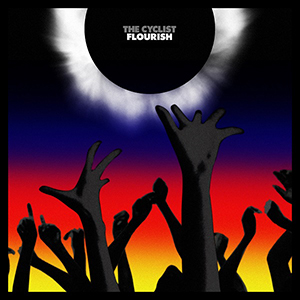The Cyclist Flourish
Although he debuted in 2011 with the Bending Brass cassette, Irish producer The Cyclist (a.k.a. […]

Although he debuted in 2011 with the Bending Brass cassette, Irish producer The Cyclist (a.k.a. Andrew Morrison) probably made most of his fans with its follow-up, last year’s Bones in Motion, an album that appeared right when peoples’ appetite for lo-fi dance music was at its peak. Since then, Morrison has filled in the interim with a track on a compilation EP and a 12″ in a boogie-influenced style under the name Buz Ludzha, but now, he’s properly returned with Flourish, his sophomore LP. A heavily saturated, amorphous set of rave-referencing house tracks, it’s unlikely to disappoint anyone too much. Given Morrison’s prolific work rate, not to mention with his signature corroded production style, he could potentially be slotted into the same lineage of producers as artists like Legowelt, Ceephax Acid Crew, or DMX Krew—cult acts who jam out hundreds of tracks, sometimes striking gold but perhaps just as often releasing entire albums of sketches or failed attempts.
Of course, this humble, homespun, beat-tape approach is part of those artists’ charm. The Cyclist excels in dragging his tracks through grotty, warped-cassette distortion, but beneath the murk are structures that reference big-room DJ sets. “Breathless” reaches a vocal crescendo that recalls some of Daphni’s more charged moments, while “Tape Grunge Rave,” with its cliché rave organ patterns and crunchy house percussion, could indeed soundtrack some of the myriad of decaying VHS tapes that document early-’90s UK raves. The track also ought to appeal to fans of nostalgic producers like Lone, who references the same era, only in much cleaner fidelity. In truth, the distortion on Flourish can become overbearing; “Break Through” is decimated to the point of glitching, and while this is an interesting quirk, the arrangement isn’t much more engaging than the average old-school house tribute. This is the underlying drawback to the album—the production choices sometimes distract from the music or work to highlight its imperfections.
“Sand Dunes” works pretty well, as it’s mostly about sputtering drum patterns, replete with almost UK funky-style rolling snares. But one’s attention wanders on a piece like “Daisy Spirals,” in spite of its warbly, woozy piano melody and thick, modulating bassline. The track is all builds and breakdowns and dramatic EQs, but they happen so busily, and are so coated in that distortion, that much of their elegiac power is removed, and the arrangement appears to be searching for some resolution that never materializes. There’s no question that Morrison can lay down a worn-sounding track with plenty of classic motifs and twists and turns, but at this point, he’s not always matching the vitality of his influences.

